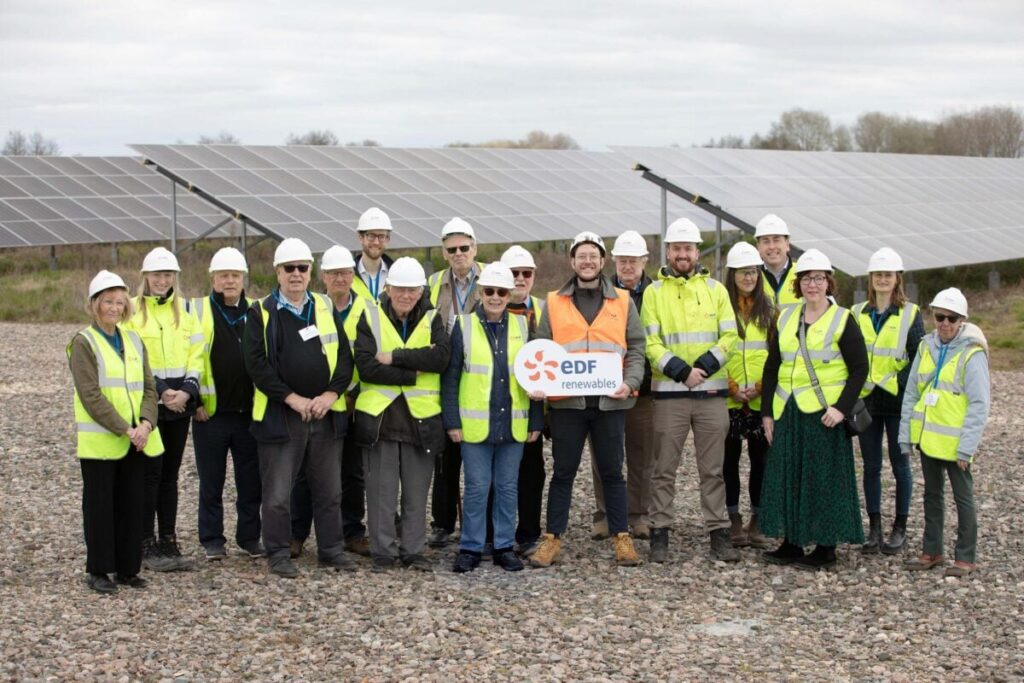The first PV energy plant from EDF’s first utility scale on solar energy in the UK began to generate electricity last year, which activated a £ 20,000 a year of community benefit fund.
EDF Renewables UK, the subsidiary of Clean Energy of the French Nut, announced yesterday (April 10) that the 49.9 MW Sutton Bridge Solar Farm in Lincolnshire went into commercial operation.
While the first electricity began to be generated by the factory, the local community fund was opened. It will be managed by Lincolnshire Community Foundation, a charity founded in 2002 to support the residents of the district. The beneficiaries of the EDF fund include Sutton Bridge Foodbank.
Local communities and representatives of organizations, including the Foodbank, attended a party event in which EDF employees also explained the benefits of biodiversity designed by the PV factory.
Construction started in Sutton Bridge in 2022, a year after the local South Holland Council granted a building permit. EDF Renewables UK said at that time that biodiversity measures would include planting native hedger species to support wildlife in the wild.
Anesco was appointed as the contractor of the project, the engineering, purchasing and construction (EPC).
EDF is planning to install a battery energy storage system (BESS) on the site, for which South Holland Council has also granted a building permit.
“Solar is already playing an important role in the British trip to Net Zero, so we are very proud that our first UK Solar Farm, Sutton Bridge, started working last year,” said Edf Hernewables UK Head of Origination and Planning Grant Foley.
Biodiversity as an important aspect of the development of EDF Project
“During development we paid a lot of attention to improving biodiversity on the site, so it is encouraging to see a variety of ground -nesting birds, rabbits and Muntjac on the spot as a result of this hard work,” Foley said.
Recent studies of organizations, including the Royal Society for the Protection of Birds (RSPB) and Trade Association Solar Energy UK, have emphasized that large-scale solar Sonne-Zonne energy can make considerable benefits for biodiversity.
Balanced land use is increasingly considered to be an important aspect of the involvement of the community and the development of renewable energy to get local stakeholders aside; This will be the subject of different functions in the position in the upcoming Q2 2025 edition of Solar Media’s Quarterly Technical Journal ,, PV Tech Power (Vol.42).
In the diary, Solar -Energy Portal Writer Molly Green takes the progress of one 800 MW UK Solar Project up close, which was initially confronted with local opposition. Developer elements Green says in the article that it was listened to worry and biodiversity planning, collaborated with local farms to allow sheep on the site and – the size of the project – a community payout fund worth around £ 1 million per year.
In the meantime, for EDF, Sutton Bridge was one of the three large-scale assets for solar PV generation that the company brought online last year, which contributed to the existing British portfolio that includes battery storage, onshore and offshore wind and about 20% of the country’s nuclear generation.
The initial solar -PV factory developments each become 49.9 MW size, making them slightly smaller than the 50 MW threshold for nationally important infrastructure projects (NSIPs).

